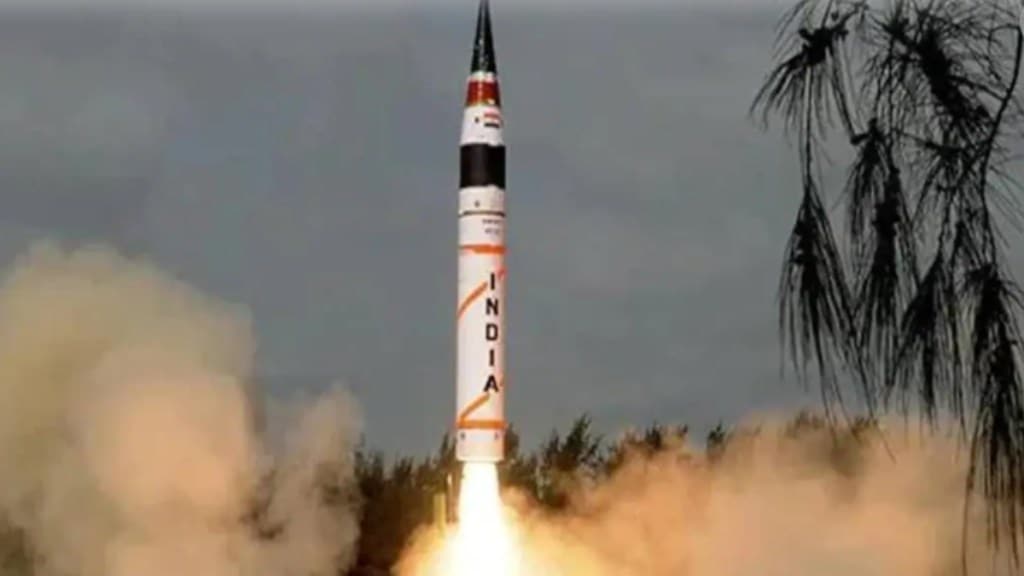In night time trials, India on Thursday successfully test fired Agni- V intercontinental ballistic missile (ICBM) with a notified range of 5,400 kilometers from Abdul Kalam Island off the coast of Odisha. This is a nuclear capable ballistic missile.
The trial today comes at a time when tension is simmering along the Line of Actual Control in the eastern sector following the clash between Indian and Chinese PLA troops.
According to sources in the defence and security establishment, the night trial of Agni-V missile which is capable of hitting targets beyond the range of 5000 kms is very crucial for India’s self-defence systems. With such a wide range of the missile several cities of China are within reach.
The trials carried out were aimed not only to validate new technologies and equipment on the missile which are meant to make the missile lighter but also at enhancing the range in case it is required.
Also Read: Indian, Chinese troops clash in Arunachal Pradesh, several injured: Sources
In October 2021, Financial Express Online had reported that the Chinese side had expressed its concerns citing a resolution of the United Nations Security Council 1172. This resolution, according to reports, was issued following India’s 1998 nuclear tests.
The test that India carries out is in line with its stated policy to have ‘credible minimum deterrence’. This means it underpins the commitment to ‘No First Use’, that the government has always maintained.
Also Read: India tests Agni V ballistic missile: Know more about it and how does it fare against other missiles
More about the Agni-5
This is indigenously built advanced surface-to-surface ballistic missile which has been developed under the Integrated Guided Missile Development Programme (IGMDP). It cannot be stopped without an interceptor as it is a fire-and-forget missile.
It has been reported earlier that the IGMDP is the brainchild of Dr APJ Abdul Kalam, whose main focus was on making India self-reliant in the field of missile technology and under this programme there are five missiles — Prithvi, NAG, Agni, Trishul and Akash.

